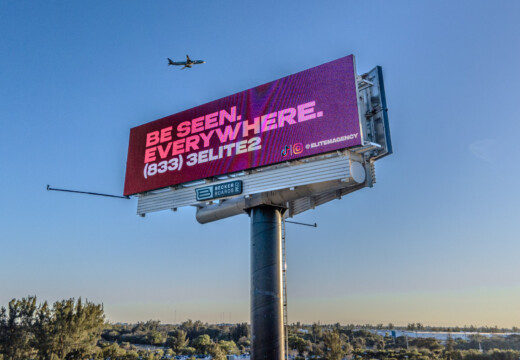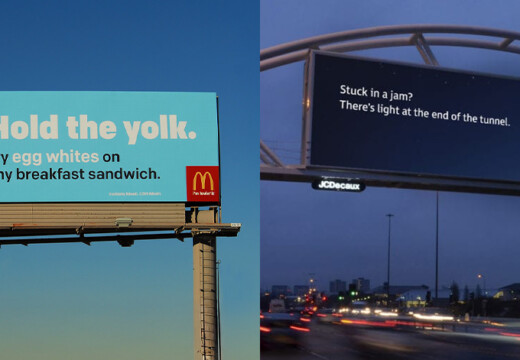Proof of Performance (POP) ensures your billboard ad runs as planned by verifying timing, location, and performance data. It’s essential for transparency and accountability between advertisers and operators. Here’s what you need to know:
-
What is POP?
POP confirms ads are displayed correctly with proof of timing, location, and performance metrics like impressions and play counts. -
Why it matters:
POP builds trust, ensures contracts are fulfilled, and provides data to measure ad success. -
Static vs. Digital Billboards:
- Static billboards rely on photos for verification.
- Digital billboards use automated tools for real-time tracking and reporting.
-
Key POP Documentation:
- Campaign details (ID, dates, advertiser name)
- Location info (coordinates, direction, market)
- Evidence (photos, time-stamped logs)
- Performance metrics (impressions, plays, durations)
Quick Comparison:
| Feature | Static Billboards | Digital Billboards |
|---|---|---|
| Verification Method | Manual (photos, timestamps) | Automated (real-time logs) |
| Performance Data | Limited | Detailed (plays, impressions) |
| Efficiency | Time-consuming | Instant tracking |
Blip simplifies POP with automated tools, real-time analytics, and centralized documentation, making billboard advertising measurable and easy to manage.
DOOH Proof Of Play Dethroned as the Digital Atom Of …
POP Challenges
Handling POP documentation for numerous billboard locations can be a tough task.
Tracking Multiple Locations
With data coming from different sites, inconsistent formats and verification methods make it hard to track performance effectively. Each location produces its own data, creating challenges in bringing everything together and comparing results. This highlights the importance of tools that can streamline data consolidation.
sbb-itb-2e2e93f
POP Documentation Guide
This guide outlines the key documentation needed to confirm ad display and performance across various billboard types.
Required POP Components
Here’s what you’ll need for proper Proof of Performance (POP):
- Campaign details: Include a unique campaign ID, advertiser name, and campaign dates.
- Location specifics: Provide billboard coordinates, facing direction, and DMA or market information.
- Display proof: Supply photos or digital evidence showing the ad in its actual location.
- Performance data: Include total plays, impressions, and display duration.
- Technical details: List billboard dimensions and resolution.
- Compliance records: Document creative approvals and content compliance.
The exact requirements may differ between static and digital billboards.
Static Billboard Documentation
Static billboards require clear photographic evidence for verification.
- Installation Photos: Capture front, side, and close-up shots to confirm proper installation and visibility.
- Time-Stamped Evidence: Record the installation date and time, along with maintenance checks, repairs, and weather conditions.
- Location Context: Include surrounding landmarks and traffic patterns to confirm placement, visibility, and any obstructions.
While static billboards depend on photos for verification, digital billboards rely on automated systems for tracking.
Digital Billboard Reporting
Digital billboards use automated tools to provide accurate performance data.
Real-Time Data and Automated Documentation: Use system-generated reports, screen captures, and logs to track play counts, durations, and impressions in real time.
"Billboards are one of the most impactful ways to advertise, and with Blip, you spend a fraction of what you would end up paying elsewhere." – Ray Bowens, Founder, Hashtag-Vape
Quality Assurance Metrics: Monitor screen uptime, image clarity, and connectivity using system logs.
This automated reporting gives advertisers detailed performance insights and simplifies the verification process, ensuring accuracy and transparency in campaign tracking.
Blip‘s POP Tools

Live Performance Tracking
Blip’s real-time analytics make monitoring billboard campaigns a breeze. The system automatically logs every ad play across selected billboard locations, providing instant performance data through a user-friendly dashboard.
With real-time updates on key metrics, advertisers can:
- Keep track of actual play counts and impressions
- Manage spending relative to daily budgets
- Analyze performance across multiple billboard locations
- Access automated proof-of-play records
Document Management
Blip simplifies campaign tracking with a centralized system for all proof-of-play (POP) documentation. Every campaign generates detailed records, including:
| Documentation Type | Details Captured |
|---|---|
| Display Verification | Time-stamped play logs, screen captures |
| Performance Metrics | Impressions, plays, display duration |
| Location Data | Billboard coordinates, market information |
| Campaign Details | Creative approvals, compliance records |
This streamlined documentation process ensures quick and efficient verification.
Quick Approval Process
Blip speeds up POP verification with a simple two-step approach:
- Initial Review: Campaign materials are reviewed on the platform within 90 minutes.
- Owner Approval: Final approval is completed within 1–3 days.
"Blip works for us. It’s a different medium, and it brings a lot of exposure. It sets us apart from the rest of the [competition], and that’s what I like." – Kimberly Pinkson, Owner, Pretty In Pinkston
The platform’s automated system keeps a complete record of these approvals, ensuring a clear and verified trail for campaign execution. This process not only helps advertisers launch campaigns faster but also ensures they have reliable performance data without relying on manual tracking methods. Each approved campaign includes automatic performance monitoring, giving advertisers confidence in their campaign’s success.
Summary
POP and Campaign Results
POP tracking is a key factor in achieving successful campaign results. By implementing proper POP tracking, advertisers can:
- Confirm when and where ads are displayed
- Measure ROI through verified impressions
- Make informed decisions for improving future campaigns
- Ensure compliance with advertising regulations
In short, thorough POP documentation confirms ad placements, evaluates ROI, guides improvements, and upholds compliance standards.
"It’s not a social media thing that you see on your phone. It’s not word-of-mouth. It’s big and bold and out there in public. I would say this is the first step of looking big and public." – Chris Leslie, Founder of Leslie Lightcraft Co
Blip’s POP Solutions
Blip simplifies the POP process, turning traditional documentation into an automated system that delivers instant results. Their platform highlights the advantages of streamlined POP tracking.
| Key POP Features | Benefits |
|---|---|
| Real-Time Tracking | Verify play counts and performance data instantly |
| Automated Documentation | Keep accurate, time-stamped digital records |
| Performance Analytics | Gain detailed insights into campaign success |
| Centralized Management | Monitor multiple locations through one dashboard |
These features – real-time tracking, automated documentation, performance analytics, and centralized management – make Blip’s approach both efficient and effective, as reflected in the success of their clients.
"Working with Blip has given Mr. Charlie’s the momentum to get our new location on the map while accelerating growth for our original location." – Paul Willey, Owner of Mr. Charlie’s Chicken Fingers
Blip’s POP solutions and cost-efficient tracking make billboard advertising measurable and accessible.


